Other embroidery may be fancier, using fine silk threads on linen with stitches so small, they’re almost imperceptible. But colcha embroidery – using long stitches on plain wool cloth – is no less beautiful. And part of that beauty is its rootedness in the New Mexico landscape.
The Beauty of Colcha Embroidery in New Mexico
Colcha is part of the fabric of New Mexico, and that history is alive and well thanks to people like Julia Gómez. Gómez learned colcha when she was a teacher and took a class at the Museum of International Folk Art. When she was getting ready to retire in 2000, she took another class and was hooked. She spent a summer at El Rancho de las Golondrinas, at the invitation of master weaver and colcha artist Beatrice Maestas Sandoval. “I followed her around all that summer. I fell in love with the place,” Gómez says. And the art.
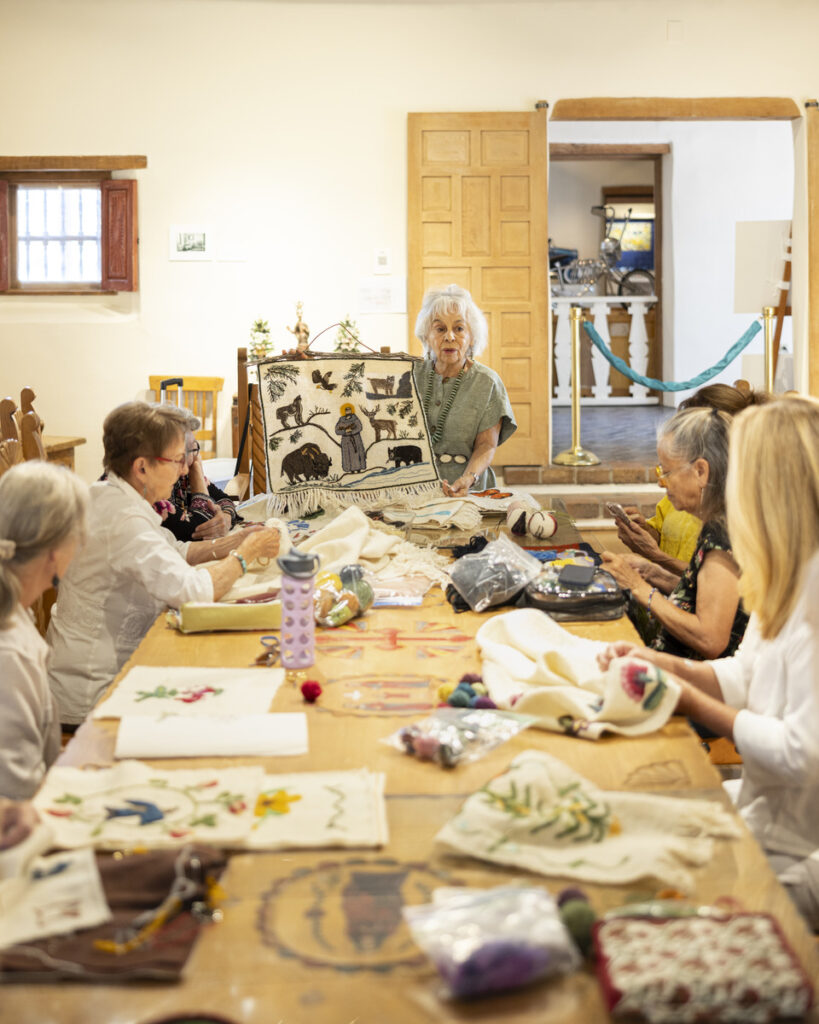
Julia Gómez shows a piece of work to the Colcha Club that meets monthly at Nuevo Mexicano Heritage Arts Museum.
She learned to spin wool from churro sheep brought originally by the Spanish to New Mexico, wash it with soap made from the native yucca plant root, and forage for dye plants to color the yarn. Chamisa, cota (Navajo tea) or onion skins give them golden yellow, oak leaves imparted shades of green, and bright red came from cochineal beetles – all ways in which the landscape becomes part of the embroidery.
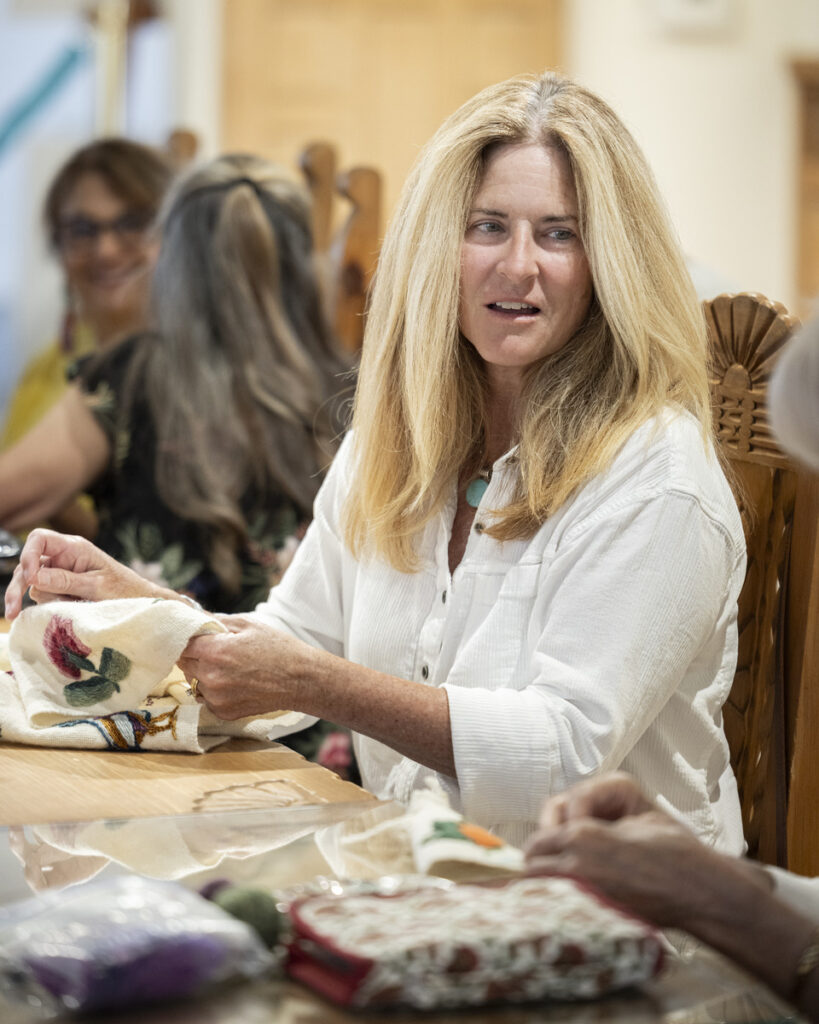
Linda Nelson has been coming to the club for over two years.
Gómez learned to weave her own sabanilla – the “backbone fabric” of colcha – and gained an appreciation for the resourceful colcheras (female colcha artists) who practiced colcha to marry their desire for beauty with the practicalities of living in a place where almost everything had to be made by hand. It was a window not only into the craft, but also into the history of the Spanish settlers in colonial New Mexico. “I loved the history, because it’s my history, and I learned what the people did to survive.”
From the Beginnings of Colcha to Today
Today, Gómez shares that love with others, including a group of colcha enthusiasts who meet each month at the Nuevo Mexicano Heritage Arts Museum. Colcha comes from the Spanish word for blanket or bed covering, explains Gómez. “One of the stories is that if there was a hole in the blanket, instead of just sewing it up, they embroidered a flower or bird or something that made it decorative,” she adds. Typical colcha patterns then as now include flowers, vines, butterflies, birds, and depictions of saints.
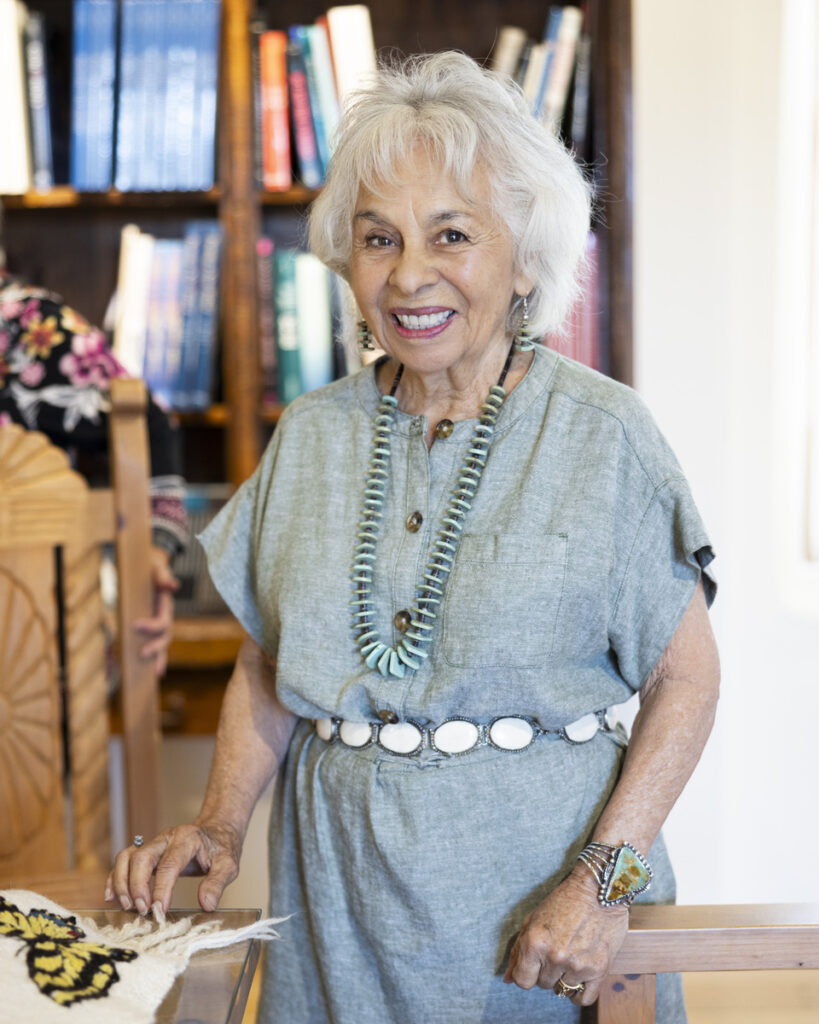
Colcha instructor Julia Gómez.
While Gomez works on a piece – an altar cloth perhaps – she thinks about the lives of the women who practiced colcha centuries ago. “I imagine that they’re sitting there by the last light of day, taking a breath, and they would be embroidering there by that last light of day, and they needed something to cover quickly and something that you don’t have to have perfect vision to do, because the light was so bad,” Gómez says.
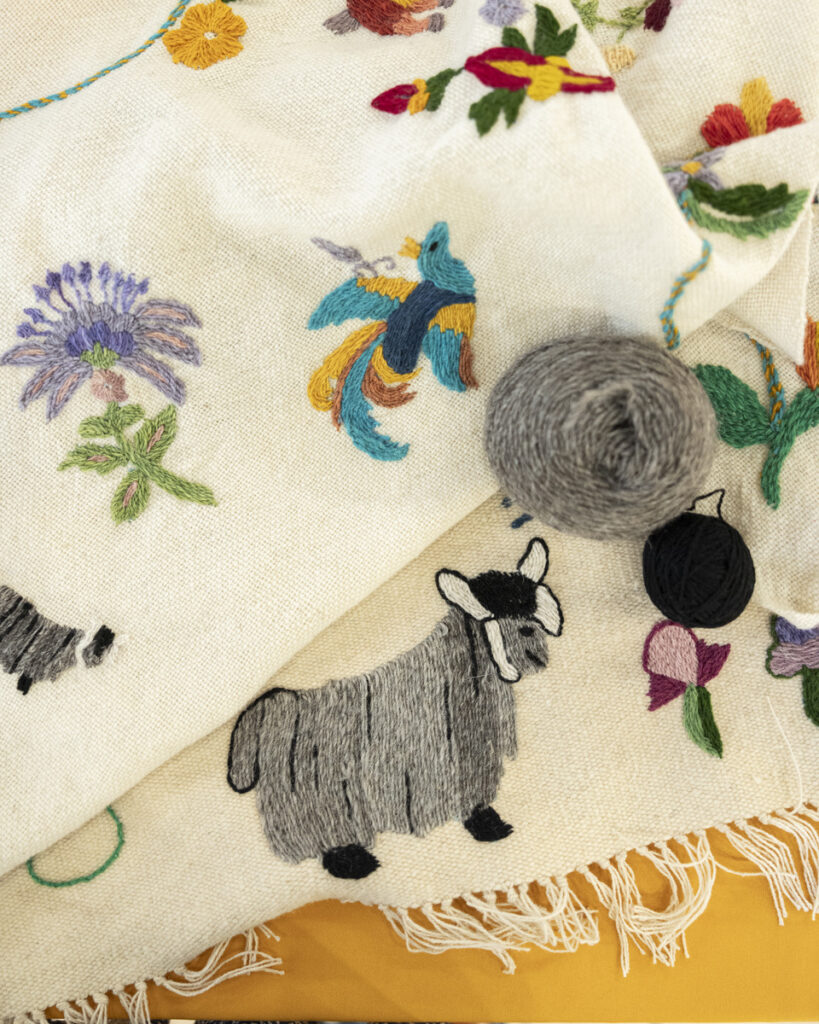
Colcha is a simple stitch, she explains. “It’s very cooperative. It’s very easy. Anybody can do it. And it’s very satisfying because the women there left a lot of beauty in this arid land when they first came.”
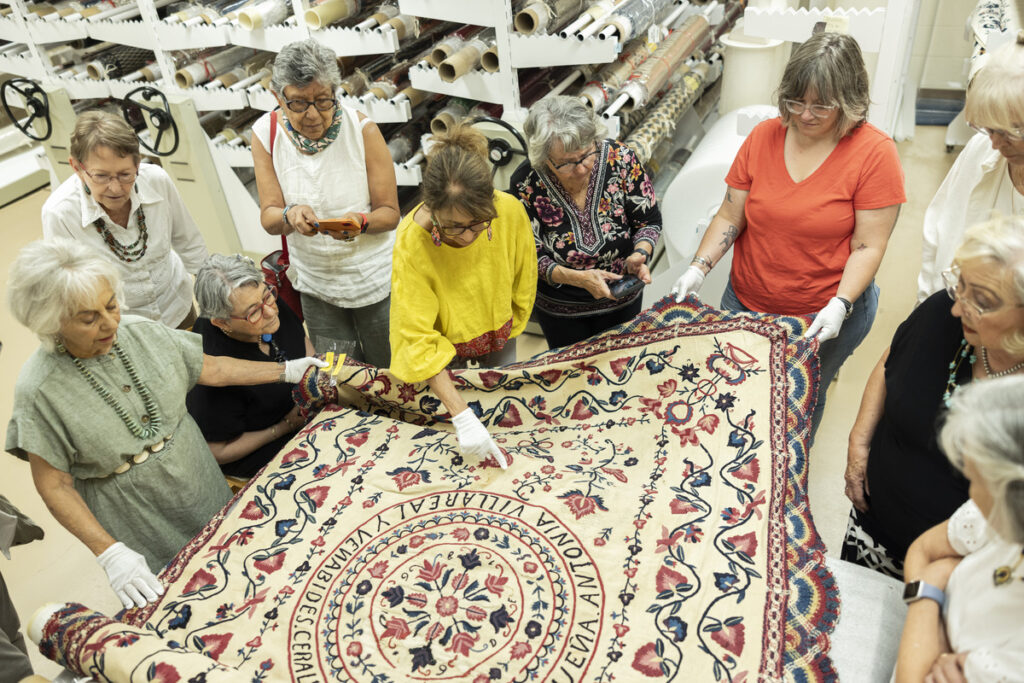
E Boyd Curator and Museum Director Jana Gottshalk shows the members an historic colcha piece from the museum’s collection.
Strengthening Community Through Art
That beauty is evident in the work the members make at the colcha club. Much like an old-fashioned sewing or quilting bee, the more experienced share their knowledge with the novices. Members show the group what they’re working on and there are visits to the museum’s vaults to marvel at historic pieces and wonder about the unnamed women who created them long ago. Rosalina Salazar Hundley has been coming to the group for over a decade and travels to Santa Fe from her home in Albuquerque. She learned colcha from her mother. “It’s kind of my connection with her,” she says. Annette Gutiérrez Turk carpools with Hundley. She is a Spanish Market artist and is working on a piece that will find its home eventually at the Casa San Ysidro.
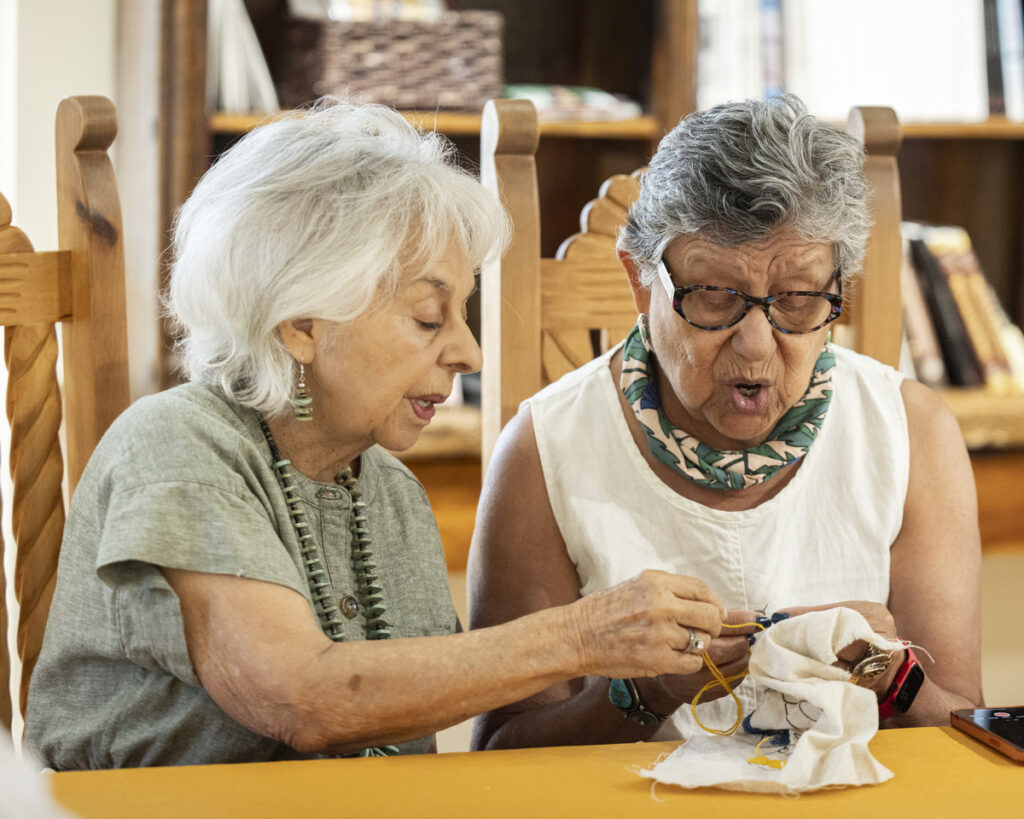
Julia Gómez shares colcha tips with member Véra Guillen.
Precides Martinez – a new addition to the group – had only been attending for a few months but was already working on a Santo Nino de Atocha, embroidered on a gunny sack. When she tells me, “It’s something you can pass on,” I get the feeling that she means not only the piece itself, but also the craft.
Gómez has repeatedly won prizes at the Spanish Market in Santa Fe and still continues to create masterful works full of meaning and reverence. She’s travelled the world to share her love for colcha, but you can see that her heart remains at home where her roots and the roots of colcha not only survive but thrive.
Story by Julia Platt Leonard
Photography by Tira Howard
Shot on location at Nuevo Mexicano Heritage Arts Museum
Subscribe to TABLE Magazine’s print edition.
